%%USERNAME%% %%ACCWORDS%% %%ONOFF%% |
 |
The stellar nations from Majesty's Offspring |
| Book One in the Age of Majesty series: "Majesty's Offspring, Official Web Site" 13+ Online Version: "Overview / Book Back Cover" 18+ eBook/PDF Version: "Invalid Item" Characters: "Character Encyclopedia" Worlds: "Stellar Worlds Encyclopedia" Timeline: "Timeline" Terminology: "Terminology" Artwork: "Artwork - Majesty's Offspring" Novel Web Site (Coming Soon): http://www.ageofmajesty.com ---------------- United Earth Parliament 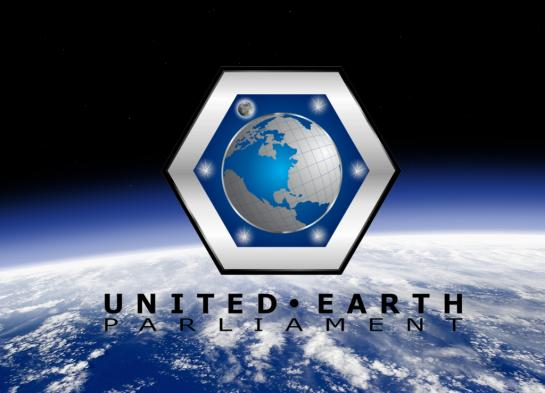 Introduction The United Earth Parliament is the one-world government of Earth. Formed to help humanity survive the Cataclysmic Age, a period where more than a third of Earth's population died due to natural and man-made disasters. Following this period, the UEP solidified its rule of Earth during the Age of Majesty, when the AI cured most of humankind's problems and brought worldwide peace. When Majesty created Stellar Drive technology, the UEP sought to expand into the nearby world of Mars--- sending seed ships to colonize and eventually terraform it into a habitable planet. However, the expansion was halted when a group of scientists left the UEP and brought the Stellar Drive technology to the Martian colonies, who were already secretly trying to secede themselves from the UEP. A war erupted between the Martian colonies and the UEP, but it soon ended when public outcry against the war forced the UEP into a peace treaty; this resulted in the formation of the Martian Confederacy and forced the UEP to recognize it as a sovereign world. Years later, Majesty became a threat to humanity and both the UEP and the Confederacy went to war against it. Once Majesty was destroyed, the Venusian colonies became emboldened by the UEP's weakened position and followed in the Confed's footsteps to form the Venusian Initiative. This opened the door for the formation of other stellar nations, such as the Space Habitat Coalition. Stellar Geography Home World: Earth, Sol System Spatial claims: The entire planet of Earth and its moon. Orbital stations: Aquarius-1, Aries-1, Aries-2, Deimos-1 (until December 2271), Helios-1, Parus-1, Stardust-1, Venus-1 (50%) People Population: 1,720,277,706 (July 2212 est.) Population growth rate: -0.242% (2211 est.) Languages: English 52%, Chinese 30%, Spanish 12%, other Indo-European 3%, Asian and Pacific island 2%, other 1% Government 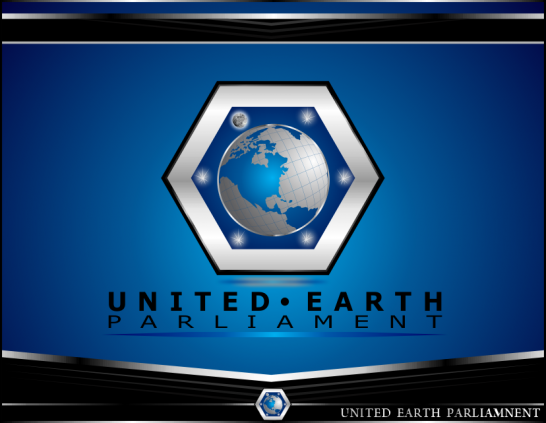 World name: Earth Conventional long form: United Earth Parliament Abbreviation: UEP Government type: Parliamentary republic Capital: Name: New York City, North America Location: Earth, Sol System Heads of Government: (Since January 2211) Executive President: Frank Sino Secretary of Security & Premier: Ned Jackson Vice Presidents: Joseph Graydon Helena Boyles Chan-juan Hao Eugen Dragos Secretary of Commerce: Floyd Stanford Secretary of Infrastructure: Zhuang Yang Secretary of Law & Order: Manuel Ortiz Secretary of Terrestrial Affairs: Alexander Trage Economy  The UEP has the largest and most diverse economy of the stellar worlds, with a GSI of 83Tc (per capita GSI @ 252Kc). In this market-oriented economy, business firms make most of the decisions and the world government buys needed goods and services predominantly in the private marketplace. Boasting the largest military of all the worlds also gives it decided influence in interstellar affairs. UEP corporations enjoy a great deal more flexibility and influence in government policy than its stellar neighbors: The Martian Confederacy and Venusian Initiative. At the same time, their reliance on extraterrestrial material that is not available domestically has forced an imbalance in stellar trade favoring the other worlds. In addition, the population of unemployed vagrants on Earth has been steadily growing-- resulting in increased crime throughout the planet. Corporate Guardianship Program (CGP) To combat the vagrancy problem, the UEP has pushed the controversial Corporate Guardianship Program (CGP), in which citizens submit themselves to have their lives planned and controlled by corporate employers. In this arrangement, the citizen is called a child of the company instead of an employee. Once put under its guardianship, the company manages most of the citizen's affairs--- finances, health, long-term planning, psychological, social and consumer needs. In exchange, the citizen will have to perform whatever duties the company requires (usually rotating roles and duties multiple times per year); terms of employment usually last three years. It is still too early to measure the positive effect of CGP on the UEP economy. Nevertheless, the economy is projected to continue steady growth, low inflation, and additional commerce through stellar expansion. Infrastructure As with all the stellar nations, The Ocean is engrained in the UEP's terrestrial and stellar processes and resource exchanges. For decades, The Ocean's central root transponders were physically located on the UEP's home world, Earth. At the end of the UEP-Confed war, one of the mandates in the Treaty of Phobos required the decentralization of The Ocean, opening the other stellar worlds to host their own root transponders. Nevertheless, the UEP has a technological advantage in its Oceanic infrastructure. By utilizing a more robust network of private sub-Waves, it is able to transfer greater amounts of resources through the stellar Ocean than the other worlds, giving its corporations an edge over its stellar neighbors. Military Terrestrial Armed Forces The UEP has the largest combined military force of all the interstellar worlds, comprised of terrestrial and stellar armed forces. Its terrestrial forces are called the UEP Guard and are a land, air and sea force. The UEP Guard's primary duty during peacetime is to enforce local laws, provide support to citizens when needed, and maintain the safety of all air and sea shipping. In time of war, the UEP Guard's mandate is to repel invasions to its terrestrial assets on Earth and abroad. Stellar Armed Forces The stellar armed forces is solely comprised of the UEP Navy (includes UEP Marine Corps). During peacetime, the UEP Navy's duty is to deal with any stellar attacks on UEP assets, such as piracy or other criminal activities. During wartime, the UEP Navy's mission is to engage and destroy the interstellar navies of the enemy, clearing the way for the UEP Marine Corps to lead any terrestrial invasions. UEP Enforcers The UEP has a special covert military branch called the UEP Enforcers. Originally called the Covert Space Operations Wing (CSOW), the Enforcers are a small, lean force designed to operate in both a terrestrial and interstellar capacity. They are primarily used for covert military, police and espionage operations. In many cases, Enforcers will work closely with both the UEP Navy and UEP Guard for special missions. However, unlike the other armed forces who report to the Secretary of Security & Premier, the UEP Enforcers report directly to the Executive President. Military Technologies The UEP Navy is comprised of mainly human-operated military assets such as stellar cruisers and fighters. Additionally, they utilize remote, drone-based military craft such as: Attack Drones, Stellar Torpedoes and Interstellar Cannons. Both the UEP Guard and Marine Corps' infantry operate terrestrial military assets such as: air/sea ships, hybrid stellar/aerial fighters and mechanized robotic forces. UEP Enforcers operate lesser-armed variants of these arsenals. Transtellar Issues Even after the Treaty of Phobos, tensions between the United Earth Parliament and the Martian Confederacy have never fully eased. Shortly after the treaty, the UEP accused the Confed of continuing to harbor AI technology, forcing a multi-world team of inspectors to search for evidence of the outlawed technology on Martian soil. Despite not finding any evidence, the UEP has remained distrustful of the Confed and continues to raise the AI issue during Interstellar Peace Alliance conferences. The Martian Confederacy 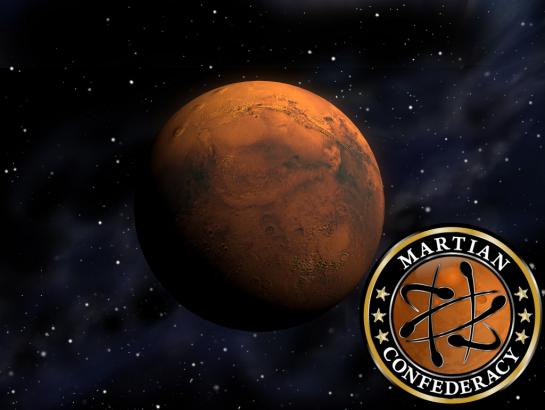 Introduction The Martian Confederacy is the second largest of the stellar nations in both population and economy. Its origins are traced back to the original United Earth Parliament settlers, who eventually rebelled against their home government, resulting in the Martian War of Independence of June 2079. When the war ended, the Treaty of Phobos declared that the Martian government was an independent, sovereign world, thereby forming the Martian Confederacy on February 11, 2079. During the Great Scientific Rebellion, some of the brightest scientists defected from the UEP and became employed by the Confederacy's government and private industry. Aside from adopting Stellar Jump Drive technology, the new Confederacy scientists produced many other innovative and exotic technologies. The most controversial of these was created under Project Longbeam, a government-funded initiative to develop a matter teleportation device. Longbeam scientists theorized they could use quantum entanglement to teleport matter across great distances, using The Ocean as the digital transport. The Confed's hope was to invent technology that would allow it to transfer material resources using The Ocean--- thereby eliminating the need for physical transportation of domestic goods. Although a classified project, intelligence regarding Longbeam leaked out and nearly sparked an interstellar war, with the United Earth Parliament, Venusian Initiative, and Space Habitat Coalition threatening an invasion of Mars. The opposition forced the Confederacy to drop the project and all material on the scientists' research was destroyed. The Treaty of Phobos was immediately amended to classify teleportation technology in the same vein as AI technology, thereby outlawing it. During the AI War, it was widely believed that the Confederacy was not fully committed against the AI--- however; evidence shows that the Confed did indeed contribute significantly to the war effort, with its military technology being instrumental in the final battle against Majesty. In addition, the AI War significantly devastated the Martian Confederacy's home world, much of its population suffering because of the war. Stellar Geography Home World: Mars, Sol System Spatial claims: The entire planet of Mars and its moons. Orbital stations: Aeneas-1, Ares-2, Clark-2, Deimos-2, Deimos-3, Kepler-1, Phobos-1, Phobos-2, Phobos-3, Romulus-1, Romulus-2 People Population: 28,219,202 (July 2211 est.) Population growth rate: +0.32% (2212 est.) Languages: English 87%, Chinese 10%, other 3% Government  World name: Mars Conventional long form: Martian Confederacy Abbreviation: MC or Confed Government type: Constitutional republic Capital: Name: Elysium City, Elysium Location: Mars, Sol System Heads of Government: (Since February 2210) President: Xavier Sandborn Vice President: Chin-Lan Sun Secretary of Peace: Sedrick Xanthus Secretary of Education, Science & Exploration: Lorena Nelson Secretary of Industry: Riddick Vernon Secretary of Infrastructure: Louis Carlisle Secretary of Ethics & Justice: Susan Chung Economy  The Martian economy is the second largest of the stellar nations, with a GSI of 67Tc (per capita GSI @ 272Kc) The Confed is a free market economy with a focus on science & technology, and the promotion of innovative ideas. Interstellar exports comprise 68% of the Martian GSI, making them heavily dependent on interstellar trade. In recent years, tourism has produced an additional revenue stream for the government and private industries. The government's current efforts to diversify its revenue have been largely ineffective. Martian corporations are primarily focused on science and research. The Industry Cabinet provides generous support and grants to these corporations, but heavily scrutinizes all non-science corporations and imposes many restrictions to foreign companies operating within its sovereign territories. Despite the challenges, the Martian economy is still healthy and expected to prosper with steady growth, low inflation, and rapid advances in technology. Intellectual Proprietorship Council (IPC) In an effort to maintain its technological advantage, the Martian Confederacy formed a special cabinet called the Intellectual Proprietorship Council (IPC). The IPC's sole function is to operate, maintain and provide oversight of the Science Proprietorship Program (SPP). Through the SPP, Martian citizens can easily form their own research institute called a Scientific Proprietorship (SP). While operating an SP, the citizen is the sole employee and researcher. An SP operator must identify a problem to solve that will benefit the Martian population and/or scientific community. The IPC will usually approve the request for an SP if another SP is not currently working on the problem, or if the existing SP has shown little progress. Terms of employment under an SP can last no longer than five years, but can sometimes be extended if the SP can produce evidence of significant progress in the research. Once approved, the IPC will fund and provide the SP unlimited support until the term is completed. While operating an SP, the citizen must temporarily change their name to the SP project title. When the term is completed, the SP project title is permanently appended to the citizen's file as a former name; thereby permanently associating them with the success (or failure) of the project. If an SP project is successful, all intellectual property belongs to the SP operator for a period of three years--- providing an additional source of income to them even after the term is over. Infrastructure As with all the other worlds, The Ocean is engrained in the Confed's terrestrial and stellar processes and resource exchanges. For decades, The Ocean's central root transponders were physically located on the UEP's Home World: Earth. At the end of the UEP-Confed war, one of the mandates in the Treaty of Phobos required the decentralization of The Ocean, opening up the other stellar worlds to host their own root transponders. The Martian Confederacy immediately took advantage of this; not only hosting their own root transponders, but tweaking them to better suit the research and development needs of its local scientist population. Military Terrestrial Armed Forces The Confed is tied with the Venusian Initiative for having the second largest combined military of all the interstellar worlds, comprised of terrestrial and stellar armed forces. Its terrestrial forces are divided into two distinct branches: The Civic Guard and the Praetorian Guard. The Civic Guard are a local police force responsible for enforcing laws and protecting its citizens from civil disorder. They are mainly equipped with small arms and terrestrial vehicles. The Praetorian Guard are an air and land military force. Their primary duty during peacetime is to enforce local laws, provide support to citizens when needed, and maintain the safety of all air and land shipping. In time of war, the Praetorian Guard's mission is to defend Mars from terrestrial invasions. Stellar Armed Forces The stellar armed forces are solely comprised of the Confed Navy (includes Praetorian Peacekeeper Corps). During peacetime, the Confed Navy's duty is to protect all Martian stellar assets from any threats such as piracy or other criminal activities. During wartime, the Confed Navy's mission is to destroy or disable enemy stellar navies and protect all Confederacy assets from a stellar attack. Military Technologies The Confed Navy is comprised of human-operated military assets, primarily stellar cruisers and fighters. Although a much smaller force than the UEP, the Confed Navy makes up for this by having superior stealth technology, making its fleet virtually undetectable when submerged in the shroud. Both the Praetorian Guard and Praetorian Peacekeeper Corps operate terrestrial military assets such as hybrid stellar/aerial fighters and mechanized robotic forces. Transtellar Issues Even after the Treaty of Phobos, tensions between the Martian Confederacy and the United Earth Parliament have never fully eased. Shortly after the treaty, the UEP accused the Confed of continuing to harbor AI technology, forcing a multi-world team of inspectors to search for evidence of the outlawed technology on Martian soil. Despite not finding any evidence, the UEP has remained distrustful of the Confed and continues to raise the AI issue during Interstellar Peace Alliance conferences. The Venusian Initiative 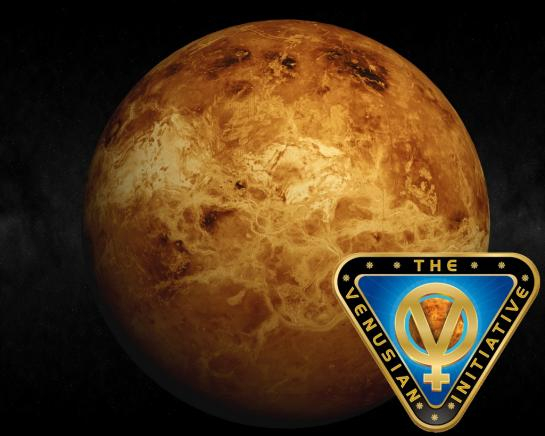 Introduction The Venusian Initiative is the third largest of the stellar nations in population and economy and is tied with the Space Habitat Coalition for having the third largest military force. Its origins go back to an ambitious project by UEP mega-corporation, MK Enterprises to terraform and colonize Venus. The multi-phase project was called The Venusian Initiative, and its goal was to make Venus a habitable world. The first phase would take advantage of anti-gravity technology to construct floating cities within Venus' atmosphere--- this would house the commercial and initial residential structures. The second phase used solar shade technology, in the form of an artificial gas cloud, to insulate Venus from sunlight--- thereby conditioning its temperature to Earth-like levels. The last phase calls for the construction of new cities at ground level, which would begin after the terra-forming process is completed (est. 2284). After the AI War ended, the then-CEO and primary shareholder of MK Enterprises, Lance Delmonte, taking advantage of the weakened state of the worlds, seized the opportunity to form his own government. On August 10, 2118, Delmonte, along with support of the colonists, formed the Venusian Initiative. Delmonte subsequently resigned his position with MK Enterprises and later sold his majority share private investors. Despite its formal separation from the UEP, both worlds maintain strong diplomatic, trade and military relations with each other. Stellar Geography Home World: Venus, Sol System Spatial claims: The entire planet of Venus. Orbital stations: Aphrodite-1, Aphrodite-2, Eros-3, Venus-1 (50%), Vulcan-1, Vulcan-2 People Population: 1,222,131 (July 2210 est.) Population growth rate: +0.012% (2212 est.) Languages: English 88%, Chinese 10%, other 2% Government 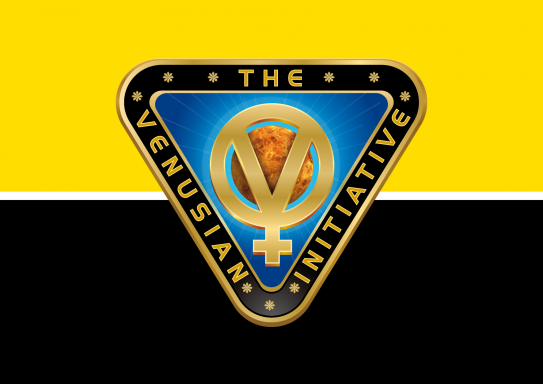 World name: Venus Conventional long form: The Venusian Initiative Abbreviation: The VI or Vens Government type: Corporatocracy Capital: Name: Ishtar City, Ishtar Terra Location: Venus, Sol System Government Executives: (Since September 2200) Executive President: Stephen Delmonte Vice President: Norman Chadwick Director of Security: Ygor Svlanivoch Director of Research & Development: John Chung Director of Commerce: Rudolph Armstrong Director of Infrastructure & Technology: Ronald Greenberg Economy  The Venusian economy is the third largest of the stellar nations, with a GSI of 26Tc (per capita GSI @ 212Kc). It is a capitalist, market-driven economy where every citizen, by law, must work for one of the domestic companies. The central government acts as the parent company for all corporations that operate on Venus and must approve any major initiatives and expenditures. Citizens are allowed, and encouraged, to start their own corporations and are eligible to receive venture capitalist funding from the central government. However, the Venusian government will always be the majority stakeholder and receive at least half of the company's profits. Like the Martian Confederacy, the Venusian Initiative relies heavily on interstellar trade, with exports comprising 92% of the Venusian GSI. However, unlike the Confed, the VI corporate machine produces and exports a wide variety of goods and services--- the latter primarily comprised of intellectual patent agreements. In addition, with its close relationship with the UEP, it benefits from heavy trade with Earth, the largest population in the system. The diverse industrial complex of the VI guarantees that it will continue to prosper, with growth expected to approach or surpass the Martian Confederacy within the next thirty years. Infrastructure As with all the other worlds, The Ocean is engrained in the VI's stellar processes and resource exchanges. For decades, The Ocean's central root transponders were physically located on the UEP's home world Earth. At the end of the UEP-Confed war, one of the mandates in the Treaty of Phobos required the decentralization of The Ocean, opening up the other stellar worlds to host their own root transponders. Through an agreement with the UEP, the VI chose not to construct their own root transponders and instead would create repeater stations, owned and operated by the UEP. Other details of this arrangement are not publicly unknown. Military Unlike the other worlds, the VI do not have a separate terrestrial military. Instead, the Venusian Peacekeeper Corps is the sole VI military force. The Venusian Peacekeepers operate both as a stellar navy and terrestrial force, similar to the UEP Enforcers but with a larger arsenal of weaponry and vehicles. In time of peace, the Peacekeepers act as a local police force enforcing domestic policies and procedures. In its stellar capacity, its duty is to protect all Venusian stellar assets from any threats such as piracy or other criminal activities. In time of war, the Peacekeepers will defend the VI from both stellar and terrestrial invasion--- although the latter is a moot point since there is no occupation of Venus land until the terra-forming process is completed. Military Technologies The Venusian Peacekeepers are comprised of human-operated military assets, primarily stellar cruisers and fighters--- they lack any significant terrestrial weaponry. Smaller than both the UEP and Martian Confederacy, they rely on advanced tactics and execution to give them an edge in combat. The Peacekeepers are known for having some of the best-trained officers and men of the worlds and pride themselves on their toughness and ingenuity. Transtellar Issues Being a close ally of the UEP, the Venusian Initiative follows its lead, having poor relations with the Martian Confederacy. To date, this has been mainly expressed in verbal jabs at the Confed and not in any significant military or commercial altercations. The Venusian Initiative is currently in a dispute with the Space Habitat Coalition over the intellectual property rights of an advanced space station design. The VI has accused the SHC of stealing the design and using it to construct its latest series of Hyppolyta stations. To date, the SHC has neither confirmed nor denied the truth of these accusations. The issue is scheduled to be debated at the next Interstellar Peace Alliance conference. Space Habitat Coalition 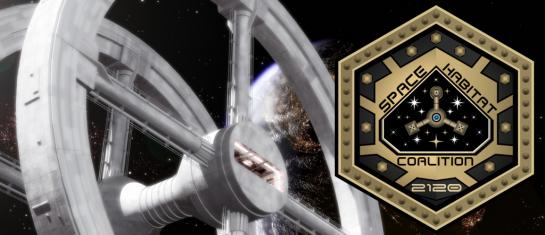 Introduction Unlike the other stellar powers, the Space Habitat Coalition (SHC) has no home world or natural territory. Instead, the SHC is comprised of space stations and remote habitats spread throughout the solar system and beyond. The SHC's origins are traced back to a venture by Earth-based private investment firm Shenmi Corporation to build affordable habitats for residential and commercial use in space. Constructed in Saturn's orbit, Zhu Station would be the first of these habitats. After easily filling its vacancies, the SHC shuttled in thousands of new residents and commercial proprietors to live and operate on Zhu Station. Eventually, the SHC expanded by building more habitats in other unclaimed space near the outer planets. Its growth culminated in the development of the first orbital city, orbiting the gas giant Jupiter: Sun City. The success of the SHC soon attracted negative attention from the other major worlds. The United Earth Parliament and Venusian Initiative demanded spatial territory and commercial tax royalties from all SHC complexes, citing interstellar laws that state that any profitable ventures in space, owned by non-world governments, could be taxed with the profits split evenly between the major stellar nations. The SHC fought back legally by taking advantage of vague wording in interstellar law on spatial zoning rights. The SHC's lawyers challenged the major worlds to produce documentation of the established zoning permits. When the major worlds failed to produce the documentation, the SHC elevated the legal skirmish by demanding evidence to prove ownership of their claimed spatial territories. Fearing an uncertain verdict, a deal was brokered on May 2120, to give sovereignty to the SHC and recognizing it as an independent stellar nation. Legal challenges behind them, the SHC expanded further with more orbital cities around the planets Jupiter, Saturn & Mercury and the moon Europa. Despite its rocky origins, the SHC maintains good relations with all the major worlds and continues to produce leading-edge technology for space exploration, terraforming and colonization. In a show of peace, the SHC also pays taxes to the three worlds for the majority of its orbital cities. The original founding company for the SHC, Shenmi Corporation, was a mysterious organization, whose real ownership and executives are shielded by the use of nominees. Even after its dissolution, the origin of its true ownership is still unknown. Stellar Geography Home World: N/A Spatial claims: (Orbital Cities) Jupiter Orbit: Sun City, Lo-Shen City Saturn Orbit: Kuan-Ti City & Shang-Ti City Mercury Orbit: Chu-Jung City People Population: ~373,000 (Exact number unknown) Population growth rate: Unknown Languages: Chinese 72%, English 25%, other 3% Government  World name: N/A Conventional long form: The Space Habitat Coalition Abbreviation: The Coalition or SHC Government type: Isocracy Capital: Name: Sun City Location: Jupiter Orbit, Sol System Ministers of Government: (Since November 2210) Prime Minister: Sanjay Zhong Minister of Finance: Lliam Zi Minister of Commerce & Labor: Joshua Menendez Minister of Law & Human Services: Chamile Qiao Minister of Security: Zachary Satu Economy 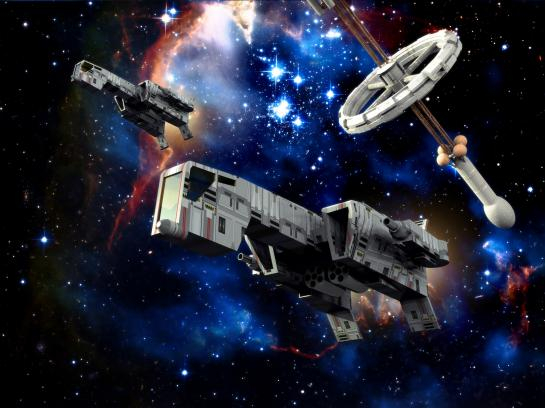 The Space Habitat Coalition's economy is estimated as the smallest of the stellar nations with a GSI of 7.3Tc--- however, it has the richest population of citizens, at a per capita GSI of 381Kc. Trade Value Coins The SHC also has the distinction of being the sole issuer of Trade Value Coins (TRVs). TRVs are the only form of legal tender not tied to an external financial institution. Rather than having an intrinsic value, TRV's value is derived from the digitally-stored micro deeds within the coin, which are comprised of a combination of assets such as nation-specific legal tender, commodities, corporate stocks, government bonds, or other assets--- enough to give its owner the indicated monetary value. Due to their nearly untraceable nature, TRVs are the preferred currency for discreet business activities and the black market. Congregations The SHC employs a mutualism-derived economy that is run by cooperative firms and organizations called Congregations. The mutualism dictum requires that Congregations be operated by its owners with a matrix-style, non-subordinate organizational structure--- similar to the SHC government itself. The SHC's Ministry of Commerce & Labor provides support to Congregations via no-interest financial loans, while the Ministry of Law & Human Services ensures that they operate both fiscally and ethically responsible. SHC law further prohibits the direct employment of a non-shareholder to a firm, thus eliminating the possibility of corporate exploitation of its employees (as they are all equal partners). Congregations are expected to compete with one another, but can procure services or products from other Congregations--- however, they are prohibited from purchasing any products or services from a foreign entity if it can be purchased domestically. Although this cooperative philosophy has given the SHC the richest citizens of all the stellar nations, it has also made obtaining citizenship extremely challenging--- as it is required by law that all adults form, or be a part of, a Congregation. The SHC's economy maintains a balanced trade of approximately 58% exports and 42% imports. This combined with the innovative and competitive nature of its Congregations, guarantee that its economy will continue to prosper for the foreseeable future. Infrastructure In the past, the SHC was deeply connected to and relied on The Ocean--- this changed after a number of high profile Congregations were hacked with credit losses in the millions. Now, the SHC completely isolates itself from The Ocean--- using null fields to block all connectivity from the outside. Instead, the SHC's infrastructure operates in secrecy, utilizing private transponders to allow its Congregations to transfer resources to each other. Transactions going over The Ocean must be cleared by the SHC customs agency prior to entering the SHC's internal networks; this has made business dealings with foreign corporations a tedious affair. Military The SHC government contracts its police and military forces with private Congregations--- soliciting and potentially changing who operates these forces every three years. The military weaponry and vehicle compliment is kept confidential and not published; however, it is estimated that the SHC military and police force are comparable in size and capabilities to UEP Enforcers. Transtellar Issues In 2212, an IPA investigation turned up evidence of illegal drug trade being sponsored by elements within the SHC government. After months of denial, the SHC finally agreed to arrest and extradite the then Minister or Commerce, Jerry Lingfield to the UEP for incarceration for multiple crimes involving the Elation drug trade. Since that time, other allegations have been made against the SHC, which are currently under review by a special IPA panel. |